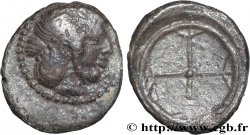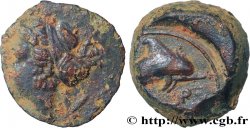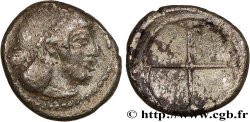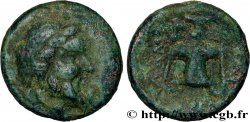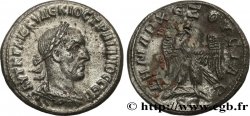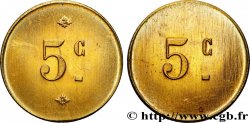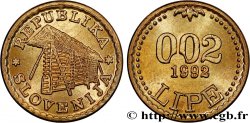v36_0051 - SICILY - SYRACUSE Tétradrachme
MONNAIES 36 (2008)
Starting price : 2 800.00 €
Estimate : 4 500.00 €
unsold lot
Starting price : 2 800.00 €
Estimate : 4 500.00 €
unsold lot
Type : Tétradrachme
Date: c. 450-440 AC.
Mint name / Town : Syracusa
Metal : silver
Diameter : 25,5 mm
Orientation dies : 12 h.
Weight : 17,27 g.
Rarity : R2
Emission: groupe 4, série 16a
Coments on the condition:
Exemplaire de qualité exceptionnelle pour ce type de monnayage sur un grand flan, bien centré des deux côtés. Très joli droit d’un style fin et élégant. Portrait de haut relief, bien venu à la frappe. Infime petit coup sur la joue. Magnifique patine de médaillier avec des reflets mordorés
Catalogue references :
Obverse
Obverse legend : ANÉPIGRAPHE.
Obverse description : Bige au pas à droite, conduit par un aurige tenant les rênes et le kentron ; le bige est couronné par Niké volant à droite ; monstre marin à l’exergue.
Reverse
Reverse legend : N ET S RÉTROGRADES.
Reverse description : Tête d'Aréthuse à droite, les cheveux relevés et retenus par un filet, entourée de quatre dauphins.
Reverse legend : SURAKOSI-ON
Commentary
Mêmes coins que l’exemplaire de la collection Pozzi (Naville I, n° 579).








 Report a mistake
Report a mistake Print the page
Print the page Share my selection
Share my selection Ask a question
Ask a question Consign / sell
Consign / sell
 Full data
Full data